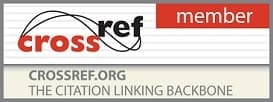- Printed Journal
- Indexed Journal
- Refereed Journal
- Peer Reviewed Journal
P-ISSN: 2394-1685 | E-ISSN: 2394-1693 | CODEN: IJPEJB
Impact Factor (RJIF): 5.38
2022, Vol. 9, Issue 3, Part A
Isokinetic strength testing of shoulder rotators in collegiate throw ball players
Author(s): Aditi Katti, Shaswat Verma and Akriti Gupta
Abstract:
Background and Objectives: Throwball involves repetitive shoulder rotations leading to the overuse of shoulder rotators causing several internal risk factors for shoulder problems. Reduction in the range and strength of shoulder rotators is major risk or cause for shoulder injuries. Hence, the primary objective of the study is to determining isokinetic strength of shoulder rotators in collegiate throwball payers. The secondary objectives are to determine the rotator strength on shoulder rotators in non-players and compare the strength between the two groups.
Methods: Sample size was estimated to be 60 females between 18-25years, 30players (20.05+1.39) and 30 nonplayers (19.96+1.33); height (157.36+5.92 players; 158.18+5.38 non-players); weight (59.66+14.60 players; 63.24+12.63 non-players) participated in this cross-sectional study. Concentric and concentric peak torque of internal and external rotator ROM and strength was assessed. Three speeds of 1800/s, 1200/s and 600/s was used.
Results: The dominant side presented higher mean values for peak torque for IR in players at all three speeds; the non-dominant side presented higher mean peak for in ER in both the groups at all three speeds. In the non-players group, the dominant limb presented higher mean peak torque values in IR at 1800/s and 600/s whereas the non-dominant limb presented higher peak for IR at 1200/s. However, only the mean peak torque of IR at 600/s had significant difference (15.65+3.23 for players; 13.2+3.54 for non-players) with p=0.02 and t-value=2.32.
Interpretation and Conclusion: There was no significant difference between the players and non-players which implies that the players need to be trained for rotator strengthening especially external rotators as muscle strength imbalance between the agonist and antagonist is one of the major risk factors for shoulder injuries. The values obtained for the strength of the players can be used as reference for further studies for population-specific isokinetic data profile for both rehabilitation and prevention.
DOI: 10.22271/kheljournal.2022.v9.i3a.2508
Pages: 26-31 | 560 Views 209 Downloads
Download Full Article: Click Here

How to cite this article:
Aditi Katti, Shaswat Verma, Akriti Gupta. Isokinetic strength testing of shoulder rotators in collegiate throw ball players. Int J Phys Educ Sports Health 2022;9(3):26-31. DOI: https://doi.org/10.22271/kheljournal.2022.v9.i3a.2508








 Research Journals
Research Journals